
| Welcome to the Wareham Forge,
the work of Artisan Blacksmith Darrell Markewitz of
Ontario Canada. Here traditional hand forged techniques
are blended with original custom designs to create
distinctive objects for garden or architecture. (What is
called 'wrought iron work' by some.) A specialist in the
Viking Age, creating reproductions for Museums and
re-enactors. Offering training courses various aspects of
Metalsmithing, plus instructional DVD's. |
 |
|
pull out guide |
Objects Created from
Bloomery Iron 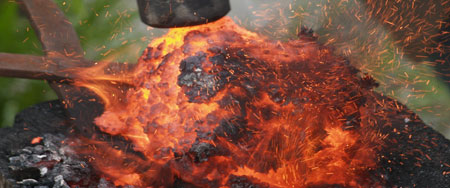 Note : Some of these descriptions may be repeated in other areas. |
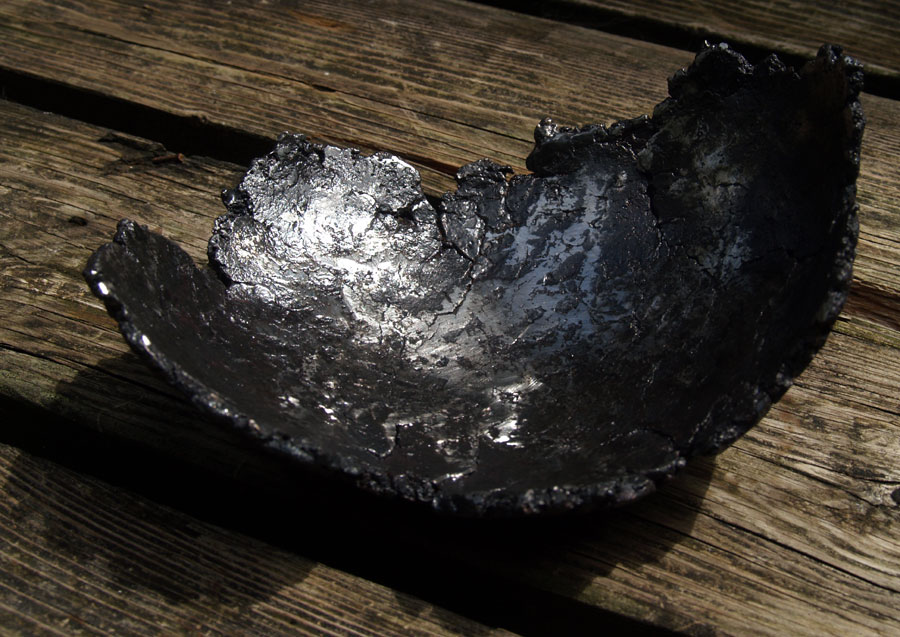 |
Bloom Bowl 4
August 2014 forged bloomery iron The starting iron bloom was produced in smelt #24, June 2007. The hemi-spherical mass was first flattened to a plate, with the ragged edges and textures of the parent bloom retained. For a full description of the complex creation process of this object, see the blog post. 15 x 12 cm, top edge 7 cm high |
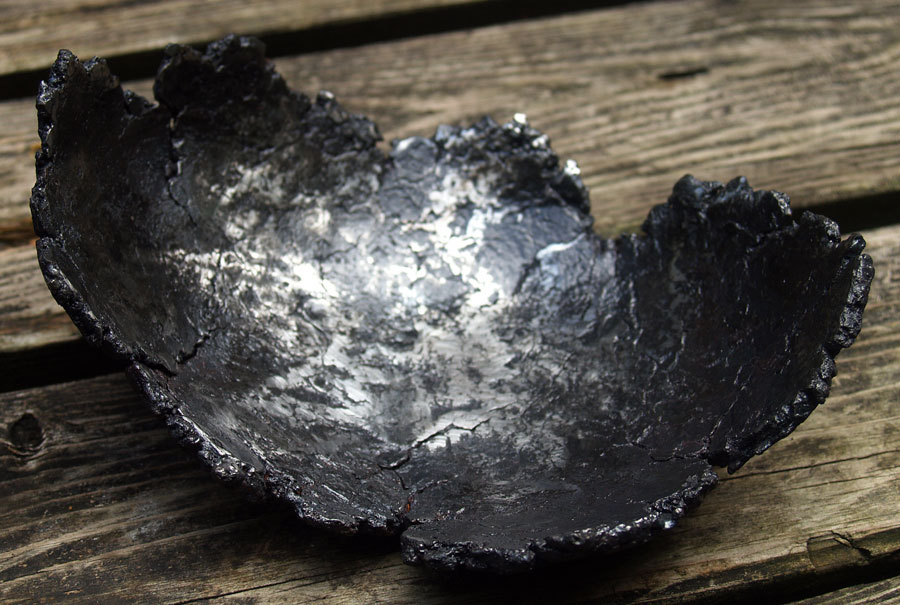 |
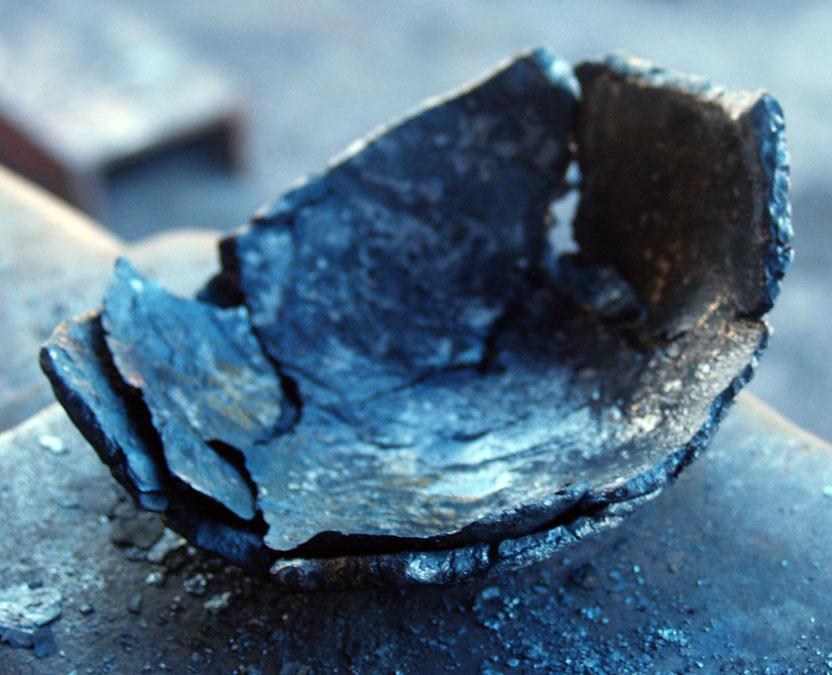
|
Offering Bowl 2 /
Turf to Tools
Summer 2014 forged bloomery iron The parent bloom and this later object was created as part of the Turf to Tools project at the Scottish Sculpture Workshop (Lumsden, Scotland). The forge set up and equipment at SSW was at best minimal. As well, the coal available was not the best (high sulphur content). As a result, the forge weld from the original consolidation compaction and fold was not as secure as I had hoped. In the end this resulted in the 'double layer' effect during the dishing phase of the forging. (In the collection of the Scottish Sculpture Workshop) |
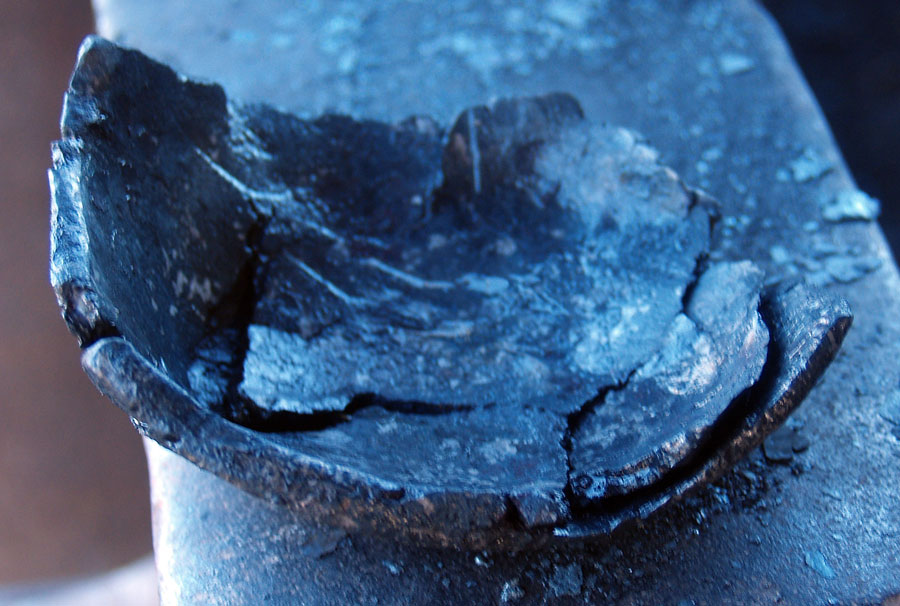 |
|
Bloom Bowl 2 The parent bloom was created at the 2005 Smeltfest event.
The metal itself was made from ore smelted using a direct
reduction furnace based on those from the Viking Age. (In
this case the same Econo-Norse type being demonstrated by
DARC on Thursday at CanIRON 8.) |
||
|
Fall 2008 forged bloomery iron 'Offering Bowl' is forged from part of the 'Resurrection'
Bloom made at in 2005. More Details available on 'Hammered Out Bits' |
 |
Norse Styled Knives
2022-2023 bloomery iron apple wood branch / antler handles This is a group of small tool, carving, and kitchen profile knives made for members of DARC, who had participated in many of the iron smelts that created the starting blooms. All had been lightly etched to show the variations in carbon content seen as shadows and faint contrasted lines. The number of times individual bloom pieces had been folded and welded in consolodation can vary widely. The lower image is a detail of one blade that illustrates not only differences in carbon carbon within the bloom, but also changes from carbon migration during the repeated welding steps. The black lines are remaining slag inclusions. |

|
French Trade Axe
2013 bloomery iron with inset carbon steel edge modern (commercial) ash handle $ 800 - this item available This is a loose replica of an artifact in my collection, a Biscayne pattern French Trade axe, a type first introduced into Ontario starting in the early 1600's and manufactured to about 1760. The block of bloomery iron I used was somewhat smaller than what had been used to make the original. The final forged shape is not quite identical to to artifact. Finished dimensions:
head weight = 1050 gm width at edge = 9.5 cm total length = 20 cm thickness at eye = 2 cm width of eye = 5 cm Creation Details : as poster / as blog post |
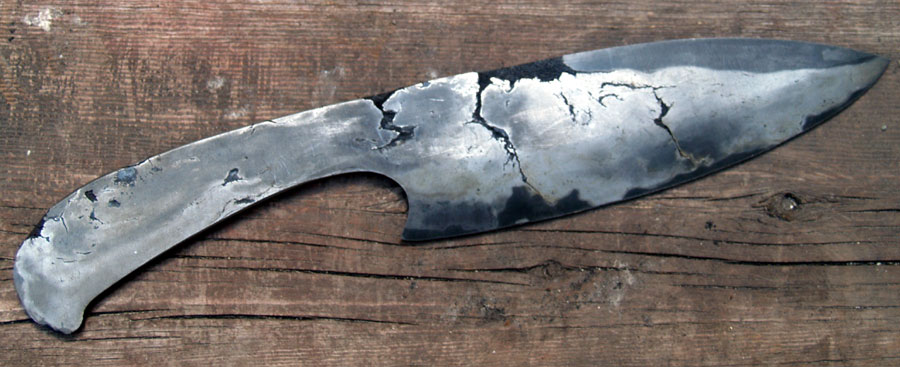 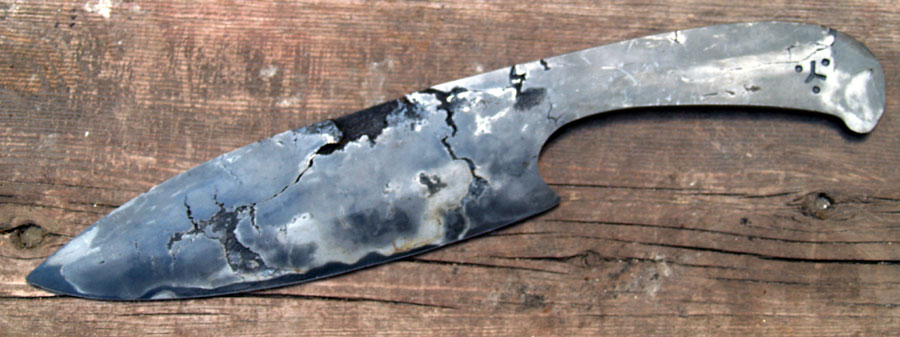 |
'Hector's
Bane' bloomery iron / carbon
steel core 'Hector's Bane' shows a combination of
influences: After some consideration, the polished blade was lightly
etched. This resulted in a 'fog' colouration over the
surface, an effect of the variations in carbon content
within the original bloom. Creation Details : as poster / as blog post |
 |
Bloom Seax
Spring 2011 bloomery iron, cherry When attempting to document older work, often the details get lost. I have images of this blade as rough forged from June of 2010, then finished in February of 2011. A small fragment of bloom was converted to bar, that bar was just enough to forge this small Viking Age styled tool knife. The bar was left purposefully with some small cracks, to better show the original of the material. The finished blade is 13 cm long by 2.2 cm at it's widest. Polishing was done on an 1880's vintage peddle driven, large diameter, grind stone. The tang was a short 'rat tail' type, which was mounted into a piece of cherry wood branch. This knife is my own personal, used in my living history presentations with DARC. |
  |
'Layered Test' Seax
Fall 2008 'pattern welded' bloomery iron The concept was this: 'Would a slab of bloom iron, folded and twisted in the pattern weld technique, actually show any distinctive patterning?' The parent bloom used for both 'Offering Bowl' (above) and the resulting 'Layer Test Seax' was one made at Early Iron 2 (Cooperstown 2005), the 'Resurrection' bloom. The working bar was made up from two smaller fragments, subjected to several welding steps to create the billet, which was drawn to a longer bar, then loosely twisted, cut in half and welded again. If you count just the folds and welds from the starting pieces, that gave 16 layers total. The total length is 9 inches, with 5 inches of blade. It is 1" wide and 3/16" thick at the back at its widest point (just at the transition to the hilt). A fuller description of work and this object can be found on a blog post. |
|
||
|
It is supported by a Crafts Projects - Creation and Development Grant. The Ontario Arts Council is an agency of the Government of Ontario. The purpose of the grant is to cover three months deicated time to allow development of a practical understanding of how to covert raw blooms into working bars, and if time permits, into finished objects. Part of the process will be to document the ongoing project, and publish the results via a dedicated blog, this web site, through demonstrations, formal papers or jounal articles. |
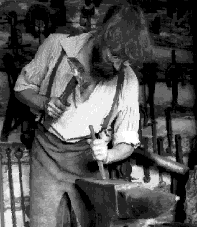 Who is Darrell Markewitz? |
|